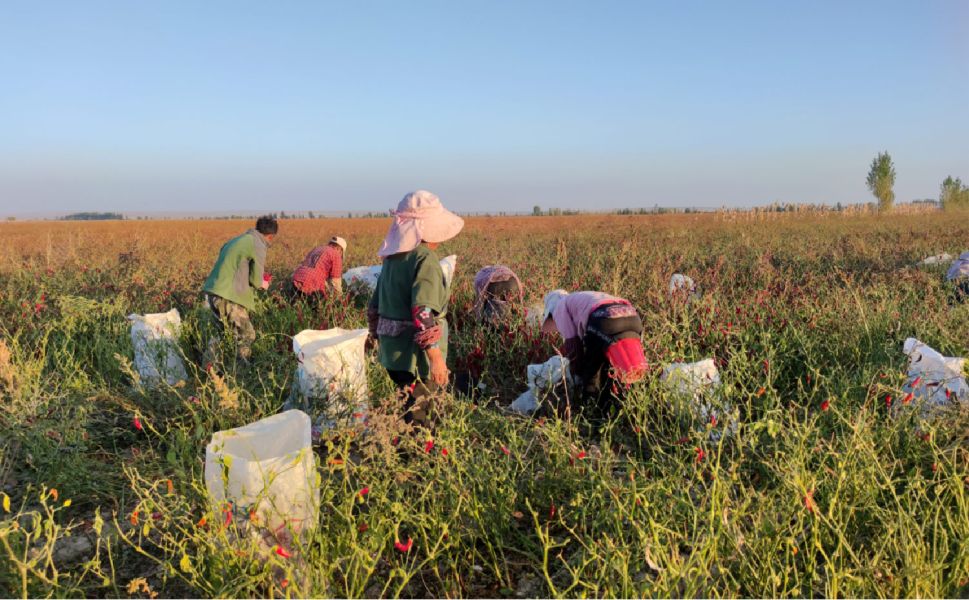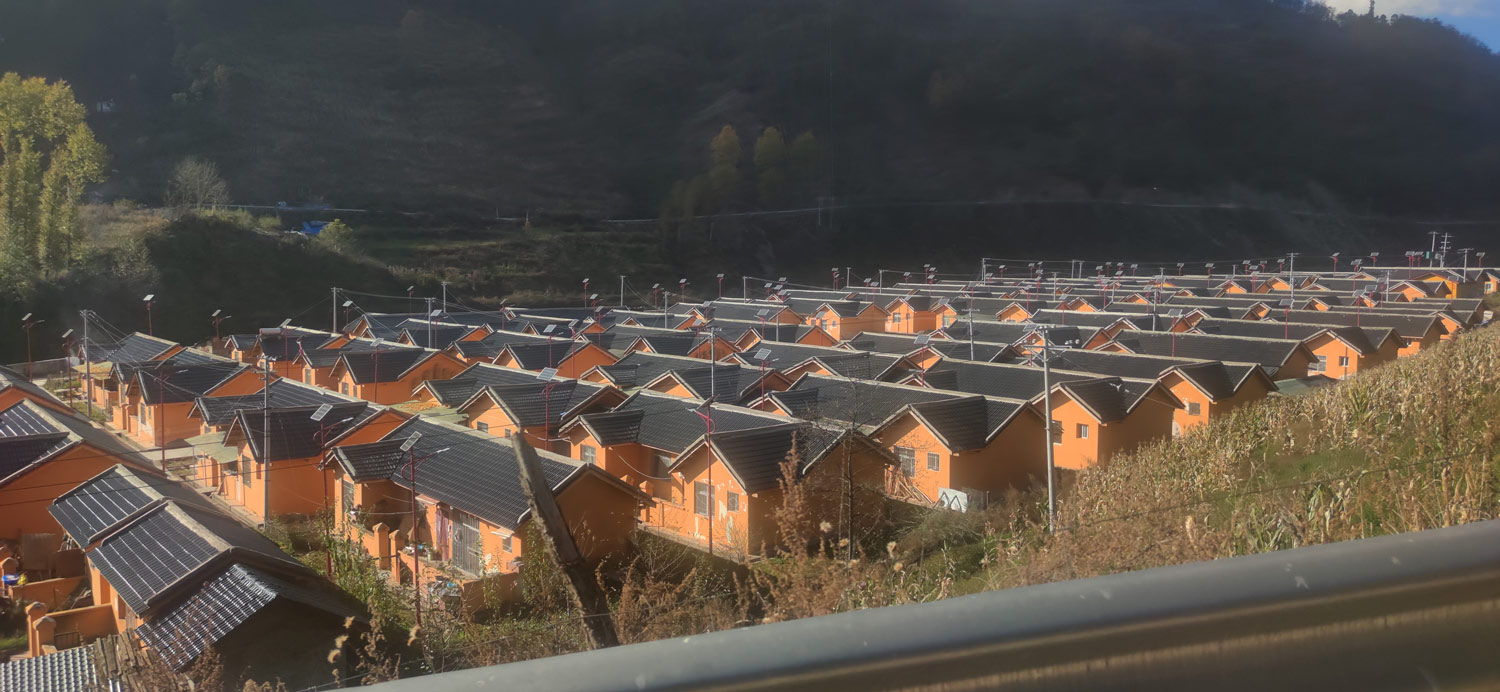
The Double-Edged Sword of Modernisation
The Integration of Yi Migrant Workers into China’s Labour Market
My ideal is barren on the assembly line,
my time is moaning on the sewing machine.
…
The city and I are separated by an insurmountable gully,
the beauty of the other shore seems only one step away from me.
But when this step fails,
my dream will fall into the abyss.
Uneasy poems set off a thousand waves in my heart,
yet I still can hardly blend into the night of the city.
The lonely shadow lengthens my homesickness.
—Jike Ayou, ‘The Upset of a Yi Migrant Worker’ (translation by the author)
Over the past decades, China has witnessed the world’s largest internal labour migration, with approximately 300 million people leaving their hometowns to look for jobs elsewhere. Labour migration has become a significant factor in China’s social development, serving both as a reflection of profound changes in the country’s social structure and as a driver of social transformation. Integration into the Chinese mainstream society’s labour market is also one of the core drivers of social change in ethnic minority regions.
Liangshan Yi Autonomous Prefecture in Sichuan Province is one of these regions. It is the home of the Liangshan Yi, who call themselves Nuosu (ꆈꌠ, 诺苏). Until the 1950s, the region was hardly accessible to outsiders, and insiders rarely ventured out. Until 2020, it was a nationally identified poverty-stricken area characterised by widespread absolute poverty. In the past few decades, however, Liangshan has undergone extremely rapid social modernisation, of which the integration of local Yi people into China’s labour market has been one of the decisive drivers.
Yi people have increasingly joined the ranks of China’s migrant workers, and indeed the poem above was penned by one of these Yi labourers, who wished to articulate the deep pain he felt in his life as a migrant (YPL 2015). Today, there are approximately 800,000 members of ethnic minorities from Liangshan, predominantly Yi, who have chosen to migrate (RACLYAP 2024). This represents more than one-third of the entire Yi population in Liangshan and a majority of adults. There are two overarching drivers of Yi entering the labour market. First, their increasing integration into Chinese mainstream society has heightened their need for cash incomes, which are difficult to earn at home. Second, the Liangshan Yi population is growing rapidly, while farmland has been scarce for decades, which has made it necessary for most young adults to seek other ways to secure a livelihood. It was not until the late 2000s that the Yi found opportunities to participate in the Chinese labour market on a large scale, especially in the factories in the Pearl River Delta (PRD) (Liu 2016: 122). They have since been taking advantage of and expanding these opportunities.
Besides the people’s own motivation, national development policies aimed at promoting the modernisation of the region have also contributed to labour migration. Among them, the recent Targeted Poverty Alleviation (TPA) Program (精准扶贫) (2013–20) has had the greatest impact. It is an ambitious program designed to eradicate absolute poverty in all of China, especially targeting nationally identified poverty-stricken regions like Liangshan and, within them, those people who are identified as members of poor households (State Council 2016). In Liangshan, several measures have been implemented. Some directly promote labour migration to selected industrial centres, while others promote it indirectly. For example, the expansion of compulsory education has improved the Mandarin skills of the younger generation of Yi, which has significantly reduced the language barriers that previously hindered their entry into the job market (Rehamo 2016, 2018; Rehamo and Harrell 2018; Yang 2021). Furthermore, large-scale resettlement and local agricultural restructuring have made it difficult for traditional subsistence agriculture to continue, forcing locals to seek other livelihoods elsewhere (Harrell and Rehamo 2013).

A decade ago, there were at least 100,000 Yi employed as temporary workers in the factories of the PRD (Liu 2013: 203), making it the most important destination for Yi migratory flows. This remains the case today. To deal with their marginal position in the local labour market, a system of co-ethnic brokers organising groups of workers has emerged to provide Yi migrants with the necessary information and access to short-term and informal employment opportunities, as well as some degree of community and solidarity far from their home in Liangshan (Ma 2018; Ma and Haugen 2022).
Despite a sometimes-tense relationship with local employers, who were concerned about the potential for collective action by Yi worker groups in labour conflicts, the Yi were frequently needed to fulfill production orders during the boom years of the Guangdong-based labour-intensive export industry. However, the Yi migrant workers still face challenges, such as unstable employment, exploitation by labour brokers, and general prejudice—all of which prevent them from escaping the bottom of the labour market in China. Compared with Han migrant workers, Yi suffer not only from the stigma of their migrant worker identity, but also from negative stereotypes about Yi people.
The Crisis of Employment in Guangdong-Based Manufacturing
In recent years, structural changes have impacted labour-intensive manufacturing in the PRD region and the demand for low-skilled manual workers is decreasing. The Covid-19 pandemic has greatly accelerated this trend, even though employment has rebounded since the lockdowns ended. Yi migrant workers were among the first groups to be affected by the drop in employment. In 2023, Yi labour brokers whom I interviewed in Dongguan estimated that the demand for Yi migrant workers in the city had decreased by at least two-thirds compared with the peak employment periods before the pandemic.
Today, even though the younger generation of Yi migrant workers has largely closed the gap in language skills and education compared with other groups of migrant workers, they remain a distinct subgroup in the factories and are regarded as troublemakers based on widely circulated stereotypes. Moreover, as labour demand has decreased, employers have expected more from their workforce. This has affected Yi workers disproportionately, as the limited job opportunities in the few factories that have long-term cooperation with Yi labour agents are typically provided to young people with at least a junior high school education, which excludes most Yi migrants. Furthermore, the long-term trend of wage growth in manufacturing has reversed due to an oversupply of labour. Salaries in the low-skilled, labour-intensive sectors where Yi workers tend to find employment have now dropped to the level of a few years ago, fluctuating between RMB10 and RMB17 an hour.
Although employers prefer to hire young female Yi workers because they are perceived as easier to manage, male workers remain the majority. This is because an increasing number of young Yi women are turning to the entertainment industry, such as nightclubs and massage parlours, which is far more profitable. A young woman working in this industry usually earns six to 10 times the hourly wage of a factory worker. Among the Yi, this trend often leads to family problems as there is a strong moral critique against women who participate in this industry and the ability of women to generate comparatively high incomes challenges the established mechanisms of male dominance in traditional Yi relationships.
Following the state’s enforcement of the Labour Contract Law in 2008 and its 2012 amendment (MHRSSC 2012; State Council 2008), a trend towards formalisation and specialisation has emerged in the labour brokerage system (Liu 2016: 9, 73; Ma 2018: 83). The basis of such businesses in kinship relations among Yi ‘family branches’ (ꋊꃤ, or 家支) gradually disintegrated. Recruitment approaches have shifted to target the whole Yi community, without consideration of kinship connections. Concurrently, Yi labour brokers have started to assume the role of employers, transcending their previous status as ‘leading workers’ (领工)—a term referring to seasoned migrant labourers who were responsible for guiding their relatives and neighbours into the workforce (Liu 2016).

Today, most factories prefer to outsource the employment, management, and other responsibilities related to workers to labour agencies. The new employer–employee relationship makes it difficult for labour brokers to lead the workers in case of conflicts with factories as was common before (Ma 2018: 143). Thus, the brokerage system of Yi workers has lost most of its previous potential for collective action. Instead, it has been incorporated into the global outsourcing of production processes to subcontractors, shifting responsibilities downwards while maintaining control and profit margins at the top.
Though the status of the Yi labour agencies remains secure, more experienced and skilled Yi workers are increasingly able to find employment independently. For them, social media has become an effective way to access a wide range of employment information. Therefore, the dependence of workers on labour brokers is decreasing, resulting in a shift in the power dynamics between Yi workers and brokers. In response, while the older generation of Yi labour brokers laments the fading of their authority, the younger generation has already begun to transform into service providers for factories and migrant workers.
Periphery to Periphery Migration
The migrant worker population from Liangshan is growing in number, ageing, and diversifying. With employment opportunities and wages in manufacturing in the PRD dwindling, Yi workers and labour brokers are seeking new opportunities elsewhere. One typical alternative form of employment is seasonal agricultural work on large farms. This means that a growing segment of the Yi migrant worker population now engages in periphery-to-periphery migration instead of periphery-to-centre migration, indicating a process of intensifying marginalisation. Currently, Yi migrants work on industrialised farms in northern and northwestern China, including in Hebei, Inner Mongolia, Gansu, Shanxi, and Xinjiang.
Xinjiang is a good example to understand this trend. The labour shortage caused by the expansion of agricultural land in northwest China in the early 2000s led to the first influx of Liangshan Yi migrant labourers who were employed on cotton fields as resident farm workers (管地工). Between 2010 and 2015, there were about 100,000 Yi migrant long-term workers in Xinjiang’s cotton fields each year (Luo 2021a: 90). However, starting in about 2017, this seasonal migration of Yi workers was significantly limited by local governments’ perception of Yi as troublemakers and by the reduced demand for temporary workers due to the automation of cotton-picking (Luo 2021b).
After a period of absence, and especially since manufacturing employment in the PRD has deteriorated, Yi workers have now reappeared on farms in Xinjiang. Today, they arrive in three different seasons: the first group comes in spring for sowing; the second in May and June to remove weeds from the fields; and the last in the autumn to harvest crops such as chilies, safflowers, and sunflowers. Thus, many groups of Yi migrant workers constantly move from one farm to another under the leadership of a foreman, following the demand for seasonal work in different parts of Xinjiang.
Compared with jobs in manufacturing, farm work is accessible to all rural Yi people, allowing many unemployed and underemployed Yi migrants to find work. Among them, middle-aged women are the largest group, followed by older migrant workers, most of whom are illiterate and can barely speak Mandarin. Both groups rely heavily on agricultural work for their livelihood, as they rarely find other forms of employment. They are accompanied by some younger workers who follow their family members, take their children to work, or want to escape the strict discipline of the factories. Unlike in manufacturing, large groups of Yi workers are not seen as problematic by employers in Xinjiang, whose primary objective is to get the work on their vast plantations done as quickly as possible when the time is right. Therefore, Yi workers in Xinjiang usually live and work together, in a group comprising several small clusters of relatives under the leadership of one or more Yi labour brokers.
Like employers in manufacturing, farm managers shift the responsibilities related to the workers to labour brokers and avoid hiring workers directly. It is also more difficult for workers to work independently of labour brokers in Xinjiang because the workplaces are remote, far from each other, and employment information is almost inaccessible without the extensive informal networks available to labour brokers. This combination of workers’ dependence, information gaps, and lack of supervision creates favourable conditions for brokers to increase their profits at the expense of their workers. According to a survey I conducted in 2023, Yi labour brokers extracted about one-third of the payments from farms in Xinjiang as gross profit for themselves, far exceeding the shares of 10–20 per cent common in manufacturing.
Compared with farm work in other areas of China, the working and living conditions in Xinjiang are especially challenging due to the area’s extreme climate and the lack of access to even basic infrastructure on most agricultural estates, which are in remote areas with low population density. In addition, the sensitive political situation in Xinjiang affects Yi workers, as they are regarded as potential troublemakers by local authorities, resulting in strict supervision and a limitation of their workplaces to selected subregions such as the Mongolian autonomous region of Xinjiang and places especially far from urban areas.
As a result, Yi workers in Xinjiang live a hard life, moving from place to place every two or three weeks, and often living in makeshift tents or uninhabited houses without basic facilities. However, the greater disappointment for workers is the realisation that the wages they were promised by the brokers—usually between RMB300 and RMB500 per day—were often exaggerated. Even when they realise they have been tricked, they cannot easily leave. In addition to the foremen’s attempts to prevent them from leaving, the high travel costs for the 4,000-kilometre journey from Xinjiang to Liangshan leaves them no choice but to accept the unsatisfactory conditions. As a coping strategy, they work longer to earn more so that, despite much lower hourly wages, their daily income is similar to that of factory workers. Though most of the workers I interviewed in Xinjiang in the autumn of 2023 expressed dissatisfaction with their labour conditions, most still returned to Xinjiang the following spring. As their foreman told me over the phone: ‘We have used up our money, and there are no alternatives anymore.’ A Yi scholar summarised the situation of farm workers in Xinjiang in these terms: ‘We imagine mobility as temporary, but it has become a permanent part of life in reality’ (Luo 2022).

Wandering and Homesickness
In the summer of 2023, I followed Yi workers from Liangshan to Dongguan, where many anxious migrants could no longer find work in the factories—a situation that forced them to follow the labour brokers to remote areas of Inner Mongolia, Hebei, and Xinjiang to work in agriculture. I found that even Yi brokers who had become successful entrepreneurs in the past were forced to participate in this labour migration, which is closely linked to changes in the global economy and China’s industrial transformation as well as the Covid-19 pandemic. This shows how far the integration of the formerly relatively isolated Liangshan Yi community has progressed, as they are now directly affected by the latest political and economic developments in both China and the world. Unfortunately, this integration has not led to equal participation in the benefits of modern Chinese society, and it has created new forms of dependency and marginalisation. The increasing educational and cultural integration of many Yi into Chinese mainstream society is not rewarded, with various constraints holding back their prospects for social mobility.
In their periphery-to-periphery migration, it becomes evident that Yi migrant workers often have significantly lower social status even than local farmers and herders. The last are often self-sufficient and can find other job opportunities in the cities, while Yi migrant workers are left with the hardest agricultural work that few locals are willing to do. Compared with other ethnic minorities with precarious participation in the labour market, such as the Mongolian herders in northern Xinjiang who live next to the workplaces of Yi migrant workers, the Yi lack viable means of obtaining a livelihood in their home area, which leaves them with no choice other than migrating with unfavourable terms. Moreover, the labour brokerage system hinders the upward mobility of workers because organising large numbers of people to engage in temporary low-skilled jobs is the most profitable approach for labour agencies. To make things worse, the surplus extracted by brokers usually does not generate capital to be invested in Liangshan but is mainly used for maintaining social networks and for entertainment purposes, especially for face-saving activities that are typical in Yi society. Apart from a small group of labour brokers, only a few Yi college students who successfully pass the competitive state exams for the civil service are perceived as successful among their peers. Other options available to rural Yi aspiring to improve their lives are very limited and most often involve danger or moral stigma, as in the case of the entertainment workers mentioned above.
While the Yi are gradually leaving behind the abyss of misery caused by heroin and AIDS brought back by the Yi pioneers migrating to China’s urban areas in the 1980s (Liu 2010), the younger generation finds that they are still trapped between the yearning for adventure in the metropolis and the pain of homesickness (ꉌꂵꁏ)—a common feeling expressed by the Yi migrant workers I interviewed, trapped as they are between reverence for their ancestors and the promises of modernity.
Acknowledgements
Deep thanks to the editors of the Made in China Journal, Ivan Franceschini, Nicholas Loubere, and Andrea Enrico Pia for their helpful input, as well as to Jan Borrie for her careful proofreading. Ma Xinrong’s guidance was invaluable. Jan Karlach’s key suggestions greatly improved the work. Heartfelt gratitude to all who made my fieldwork possible, especially the generous Yi (Nuosu) people. I am also grateful to my doctoral supervisor, Hermann Kreutzmann, for his wise guidance and to the Hans-Böckler-Stiftung for funding my PhD project and fieldwork.
Featured Image: Yi migrant workers in chili fields, Tacheng area, Xinjiang Uyghur Autonomous Region, September 2023. Photo by the author.
References





